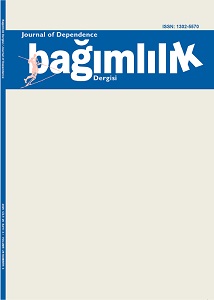SALVİA DİVİNORUM: A CASE REPORT
Keywords:
Salvia Divinorum, rhabdomyolysis, efficacy, socio-economic statusAbstract
Nowadays, narcotic and enjoyable substances threaten especially adolescents and young people. These substances are fairly common and various. This makes them easier to access. Their use is also closely associated with low socio-economic and socio-cultural conditions. It has been known psychoactive and hallucinogenic effects of Salvia divinorum for many years. It is abused for this purpose. In this study, we presented a patient who developed renal failure and rhabdomyolysis due to immobility after abuse of Salvia divinorum. It has been known that the patient remained immobility for four days after using Salvia divinorum and did not use any additional drugs. In this case report, we examined the effects of Salvia divinorum. Of course, we do not think that a single case report can explain clearly the effect potential of Salvia divinorum. Considering that there were only a few studies in the literature on this regard, we believe that this case can contribute to the literature. Furthermore, the psychosocial features of our case support that the risk of drug use may be higher in individuals with lower levels of income. It has been discussed accompanied to the literature thatthe duration ofaction ofSalvia divinorum used at high doses may be longer than usual and substance dependence is associated with low socio-economic status.
References
Reisfield AS, Thebotany of Salvia divinorum (Labiatae). SIDA Contrib Bot 1993;15: 349–366.
Imanshahidi M, Hosseinzadeh H. The pharmacological effects of Salvia species on the central nervous system. Phytother Res 2006; 20: 427–437.
Prisinzano TE. Psychopharmacology of the hallucinogenic sage Salvia divinorum. Life Sci 2005; 78: 527-31.
Wu CH, Wang CC, Kennedy J. Changes in herb and dietary supplement use in the US adult population: a comparison of the 2002 and 2007 National Health Interview Surveys. Clin Ther 2011; 33: 1749–1758.
Currie CL. Epidemiology of adolescent Salvia divinorum use in Canada. Drug Alcohol Depend 2013;128: 166–170.
Pavarin RM. Substance use and related problems: a study on the abuse of recreational and not recreational drugs in Northern Italy. Ann Ist Super Sanita 2006; 42: 477–484.
Khey DN, Miller BL, Griffin OH. Salvia divinorum use among a college student sample. J Drug Educ 2008; 38: 297–306.
Lange JE, Reed MB, Croff JMK, et al. College student use of salvia divinorum drug. Alcohol Depend 2008; 94: 263–266.
Halla W, Degenhardtc L. The adverse health effects of chronic cannabis use. Drug Test Analysis 2014; 6: 39–45.
Yan F, Roth BL. Salvinorin A: a novel and highly selective κ-opioid receptor agonist. Life Sci 2004; 75: 2615–2619.
Przekop P, Lee T. Persistent psycho- sis associated with Salvia divinorum use. Am J Psychiatry 2009;166: 832.
Diaz JL. Salvia divinorum: a psychopharmacological riddle and a mind body prospect. Curr Drug Abuse Rev 2013; 6: 43–53.
Lange JE, Daniel J, Homer K, et al. Salvia divinorum: Effects and use among YouTube users. Drug and Alcohol Dependence 2010; 108: 138–140.
Johnson MW, MacLean KA, Reissig CJ, et al. Human psychopharmacology and dose-effects of salvinorin A, a kappa-opioid agonist hallucinogen present in the plant Salvia divinorum. Drug Alcohol Depend 2011; 115: 150–155.
Akkaya C, Akgöz S, Kotan Z, et al. Illicit drug related crime profile in Bursa between the years 1974-2003. Düşünen Adam 2006; 19: 124-130.
Harris CR, Brown A. Synthetic cannabinoid intoxication: A case series and review. J Emerg Med 2013; 44:360-366.
Mowry M, Mosher M, Briner W. Acute physiologic and chronic histologic changes in rats and mice exposed to the unique hallucinogen Salvinorin A. J Psychoactive Drugs 2003; 35: 379–382.
Downloads
Published
How to Cite
Issue
Section
License
Copyright (c) 2025 Journal of Dependence

This work is licensed under a Creative Commons Attribution-NonCommercial-NoDerivatives 4.0 International License.
...
